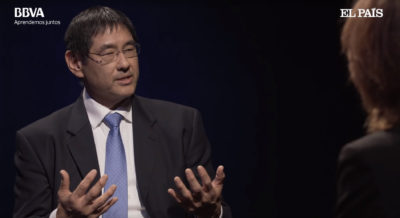We talk a lot about how to understand people’s emotions and how to read what they say accurately, but what about learning how we can change our behavior so that they are more forthcoming?
This is the subject of a recent paper by Humintell’s Dr. David Matsumoto and Hyisung Hwang. In this study, they sought to examine the impact that different cues of authority had on information interviews. This was an attempt to determine whether the truth-tellers or the liars in a mock interview context were more likely to convey information, depending on the influence of the interviewer.
After recruiting participants, they were divided into a treatment and control group. The treatment group was encouraged to commit a mock crime but told not to disclose that they had done so, while the control group simply proceeded directly to the informational interview.
This design split the participants into those who had to lie and those who had to tell the truth during the interview, with each being encouraged by a small monetary payout to convince the interviewer that they were telling the truth and had not committed the crime.
However, there were other experimental conditions at play, namely the environmental context and appearance of the interviewer. In order to prime a sense of interviewer authority, for instance, some of the interviewer wore intimidating suits or had impressive degrees and law enforcement posters on the wall.
Nothing beyond those environmental factors was different. All of the interviewers followed the same script and spoke in comparable fashions, but previous research has seen profound differences in perceptions of authority based on these apparently simple differences.
Overall, they found that the authority conditions got truth-telling participants to freely volunteer more information than their counterparts in low-authority conditions. However, there was no effect for the liars.
Interestingly, the effect of the authority condition seemed to hold even for the truth-tellers written statements, even though these were completed after the interview. This suggests that there is some lasting impact from an impression of interviewer authority.
This helps expand on previous work that looked at how to evaluate interviewees’ truthfulness and emotions by looking instead at what can promote efficacy by the interviewer. It appears that these signs of authority, even if limited to clothing, can result in more forthcoming interviews.
While this appeared to only work on people who were already telling the truth, that does not take away from the usefulness of this information. Many interviews are conducted on truthtellers, with the struggle sometimes involving getting tight-lipped people to speak more freely. Wearing a suit or even putting your diploma on the wall might help here!
In the meantime, there is always more that needs to be learned about how to tell if your interlocuter is lying, so check out Humintell’s exciting training procedure!
 Last week, we
Last week, we  While we have been focusing on microexpressions, reading people often depends on identifying their body language as well.
While we have been focusing on microexpressions, reading people often depends on identifying their body language as well.